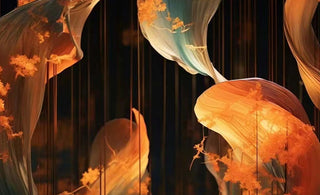
The integration of Oriental art into Western museums marks a paradigm shift in the art world, embracing the importance of cultural diversity and challenging the Eurocentric view that has dominated for centuries. This shift not only enriches the art world but also provides a platform for cross-cultural dialogue, fostering a deeper understanding and appreciation for the beauty, symbolism, and cultural narratives embedded within Oriental art forms.
By showcasing Oriental art alongside Western masterpieces, Western museums create an environment that encourages visitors to explore the connections and contrasts between different artistic traditions. It prompts viewers to challenge preconceived notions and embark on a journey of discovery, where they can witness the harmonious interplay of aesthetics, spirituality, and philosophical concepts that define classical Oriental art.
This paradigm shift is a celebration of cultural diversity, recognizing the contributions and artistic achievements of Oriental artists throughout history. It acknowledges that art is not confined to a single geographical region or cultural perspective but is instead a universal language that transcends boundaries and speaks to the human experience.
The inclusion of Oriental art in Western museums signifies a departure from the traditional narrative that privileged Western art as the pinnacle of artistic achievement. It opens doors to new narratives, perspectives, and artistic expressions, offering a more inclusive and comprehensive understanding of the art world.
Moreover, this paradigm shift fosters a deeper appreciation for the cultural context in which Oriental art is created. It encourages viewers to delve into the rich tapestry of stories, traditions, and philosophies that inform Oriental art forms, shedding light on the historical, social, and spiritual dimensions that shape their creation.
By celebrating cultural diversity, Western museums not only broaden their own artistic horizons but also contribute to a more inclusive and interconnected art world. Through exhibitions, educational programs, and scholarly research, they facilitate the exchange of ideas, knowledge, and experiences, fostering greater empathy, understanding, and respect between cultures.
This paradigm shift in the art world is a testament to the power of art to transcend cultural barriers and bring people together. It reminds us of the universal human desire to express ourselves creatively, to seek beauty and meaning, and to appreciate the rich tapestry of artistic traditions that exist across the globe.
As Western museums continue to embrace Oriental art, they play a crucial role in shaping a more inclusive and diverse art landscape. By celebrating cultural diversity and challenging established narratives, they pave the way for a future where art is appreciated and valued in all its forms, regardless of its origin or cultural background. This paradigm shift is a testament to the evolving nature of the art world and a celebration of the timeless beauty and enduring legacy of Oriental art.
























